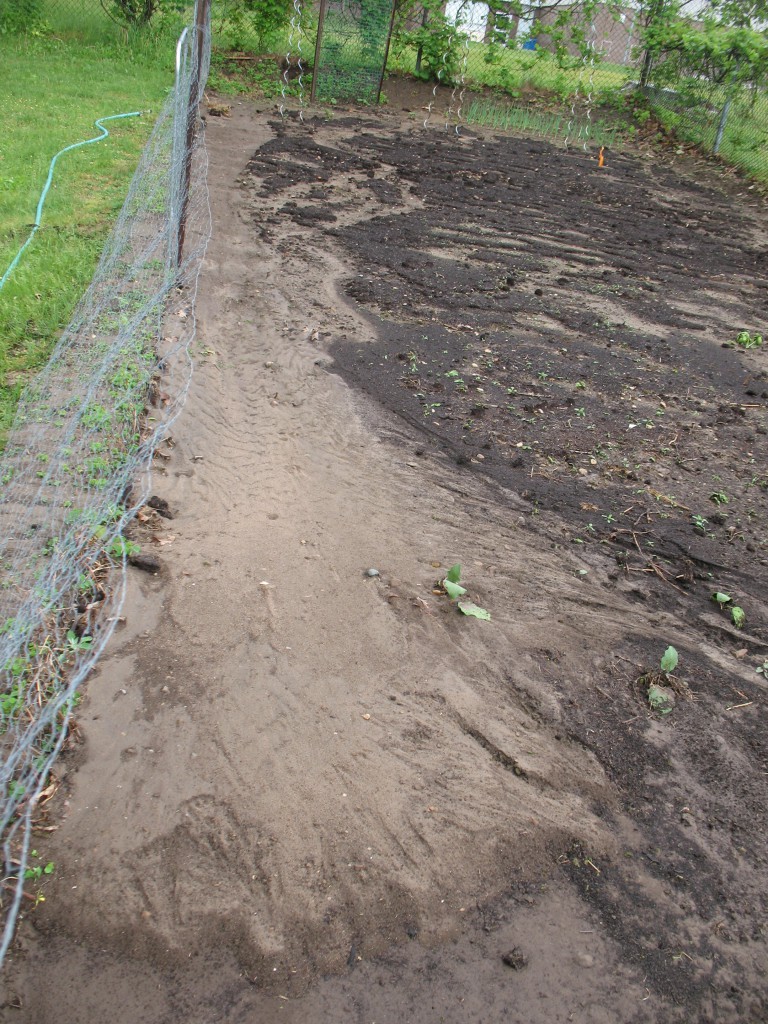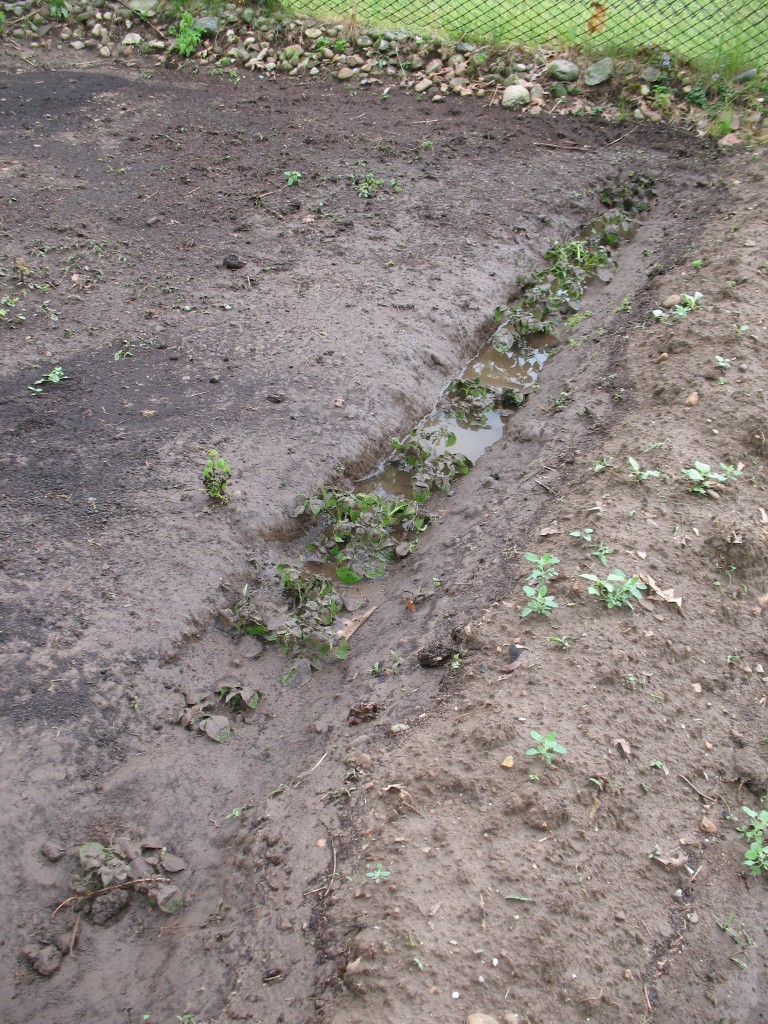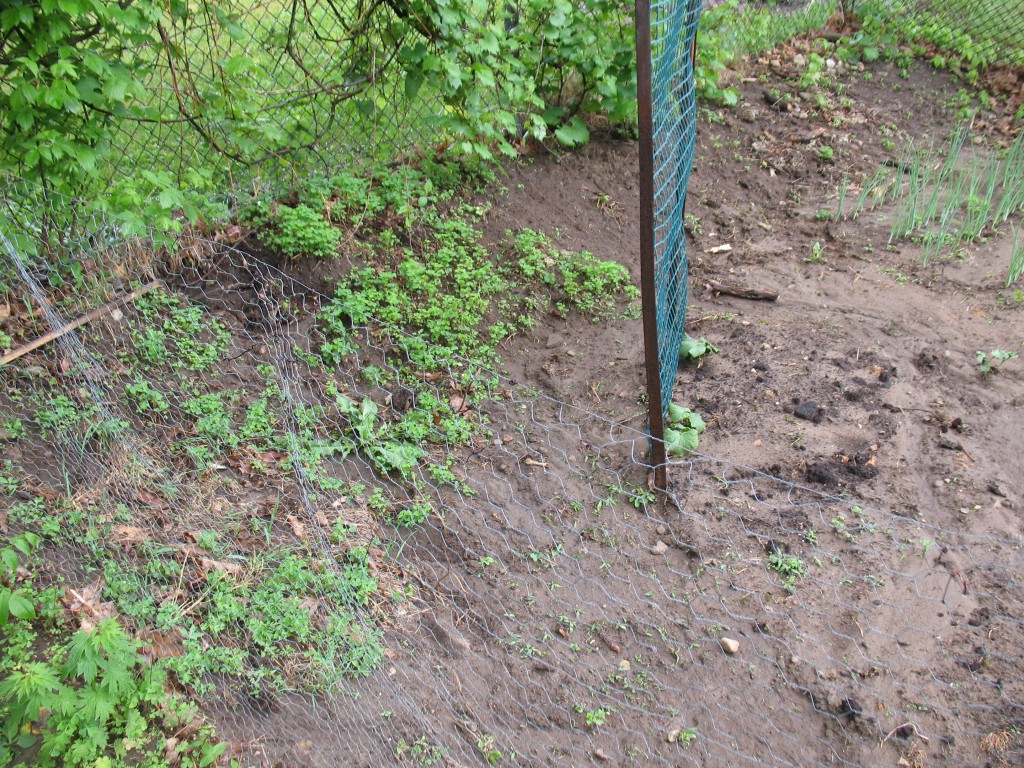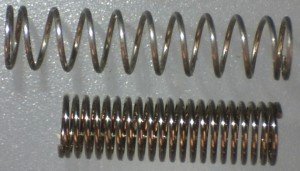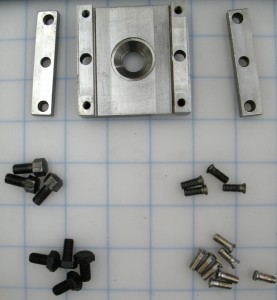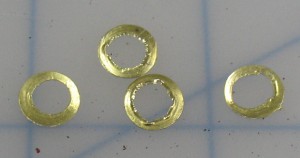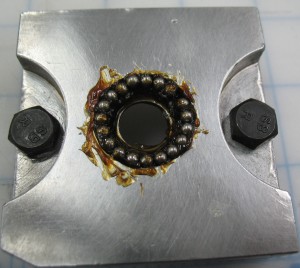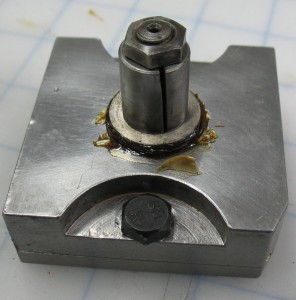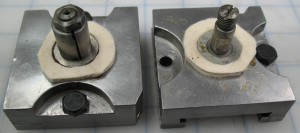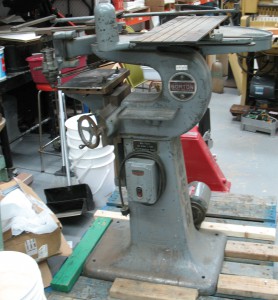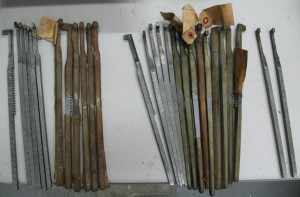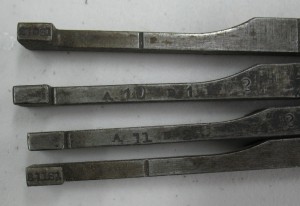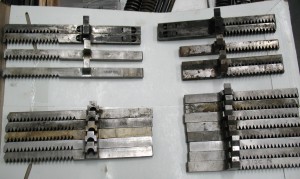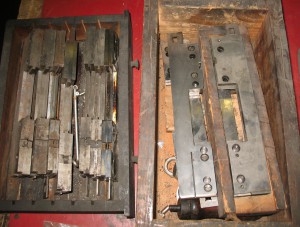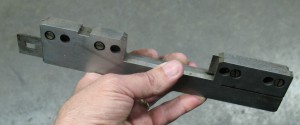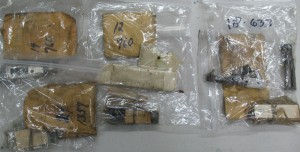It seems natural for me, as a first project using my new pantograph engraver, to try making a matrix. Rather than designing a whole new family of typefaces (or even a single typeface), I decided to make a single character. What people seem to be looking for the most lately is the at-sign @, for use in e-mail addresses.
In the Monotype matrix numbering system, the @ is considered a “Commercial Symbol” and so has markings between 20P and 29P on the “face” section of the marking (located on the front of a cellular matrix). The body size is marked as usual in the “size” section of the marking (located on the side of a cellular matrix), and being a symbol, there is a third designation of 2 because @ is Commercial Symbol number 2 (number 1 is the percent sign) marked on the back of a cellular matrix. These markings are generally augmented with alphabetic codes indicating set-width and unit-width.
For instance my specimen book lists 3 different 10-point @ symbols, coded “2-10Vb 20Po”, “2-10U 20Po”, and “2-10U 25Po”. The ‘20P’ or ‘25P’ indicates a Commercial Symbol, the ‘2’ indicates an @ symbol specifically, and ‘10’ is the body size in points. ‘Vb’ indicates a set-width of 9½ points, while ‘U’ indicates 10 points. Finally the ‘o’ indicates the correct width is 18 units wide (i.e. 18 18ths of the set-width). In general with symbols there is no correlation between numbering and appearance; in this case the first one is a slightly narrower version of the second one, while the third one has slightly less variation between the thinnest and thickest strokes.
The number of styles available varies with body size. The smallest is “2-4½Y 20Po”, the largest in cellular matrices are “2-12T 20Po”, “2-12S 20Po”, and “2-12S 25Po”. Although other symbols are available as cellular matrices up to 18 points, the @ symbol is not among them. In contrast to the spareness of variety in the @ sign, my specimen book lists 27 different percent signs in 12-point. Many of these have “Symbol” designations like “1-12S 26Po” but some have face-specific designations like “1-12Tb 609Jo” which is a 11½-set (‘Tb’) 18-unit (‘o’) percent sign made to match face 609J (20th Century Ultrabold). Such markings do not specify that it is a Commercial Symbol, so a pilcrow ¶ (Reference Symbol number 1) specific to the same face would have the same markings if one existed and was the same width.
The @ symbol is also available as display matrices, the smallest being the 14-point “14-21 No.2” in the specimen book. The ‘14’ is the body size, the ‘No.2’ refers to Commercial Symbol number 2, and the ‘21’ seems to refer to the 20P-29P range on cellular mats for Commercial Symbols. Other examples, though, disprove that last statement, such as the dagger “18-25 No.3”; the dagger is Reference Symbol number 3, and so would have a second number in the 40’s (Reference Symbols) rather than the 20’s (Commercial Symbols).
Some other symbol display mats, though, lack the ‘No.n’ designation, and in such cases the second number is the number of the matching text face, so for instance there are percent and pound-sterling signs both marked “24-42” which have an outline style clearly intended to go with text face 42 (DeVinne Outline). In these cases, though, there is nothing identifying the mat as a Commercial Symbol nor naming the specific symbol; you have to recognize it from looking at the actual mat cavity shape, just as you have to distinguish an ‘A’ from a ‘p’.
The largest display @ sign is “36-21 No.2” and there is exactly one of each standard display size. There are no alternates nor any face-specific ones.
So I have set myself a project to make a matrix for casting an @ symbol specifically designed to match a face. The font I have chosen is 18-point number 217, Swing Bold. There are two reasons for this choice: One is that I have recently cast some Swing Bold and have done some close-up study of the letter forms because my mats did not match the sample letters I given to match. The other is that this face is a script style (somewhat, at least) and so the join of the ‘a’ and its enclosing circle flows naturally. The origins of the symbol are not known for certain and there are many theories, but they pretty much all seem to come from informal handwriting rather than calligraphy and thus the flow from the ‘a’ to the circle is natural with script or italic faces. It is much less clear how the ‘a’ and circle should be structured and styled if one wanted to match a roman face or, worse yet, blackletter.
Such a mat would appear to be rightly marked “18-217”.
If this all works out I’ll do it for other sizes, and maybe expand to include ‘/’ and ‘#’ which are also becoming popular. Making them for other faces is a more long-term thing.

